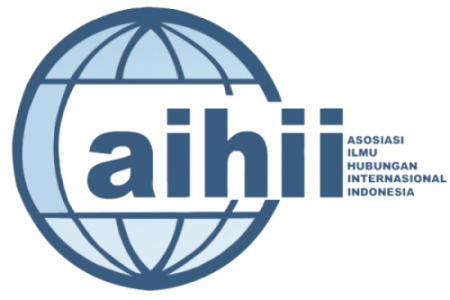Peace Education Programme in Kenya and UNICEF’s Reinforcement
DOI:
https://doi.org/10.26593/sentris.v4i2.5107.101-113Abstract
As a region prone to conflict, an Introduction to peace is mainly essential for Kenya. The government projects that education can build a peaceful Kenya. As a result, the government is allocating an amount of budget to improve education in Kenya especially in eradicating violence and maintaining peace – especially, post-election violence and sexual abuse. The government has also adopted a UNICEF program, the Peace Education Program (PEP). The government's ambition is limited to designing a system that is only effective in some areas. Therefore, UNICEF complements the government’s effort to carry out policies of a peaceful education system and conduct action research. The efforts coming from the cooperation between UNICEF and the Kenyan government will also be adjusted to the Neoliberal institutionalism theory. This theory is essential to adjust the role of UNICEF in empowering and assisting the Kenyan government while Kenya still upholds its own interests. This paper will mainly focus on the research of the Peace Education Program in Kenya and how UNICEF assist and support its implementation.
Keywords: Peace Education Program (PEP);Kenya; Children; UNICEF
References
“Ballots to Bullets.” Human Rights Watch, May 15, 2018. https://www.hrw.org/report/2008/03/16/ballots-bullets/organized-political-violence-and-kenyas-crisis governance.
Balvin, Nikola, and Daniel J. Christie. Children and peace from research to action. Springer Open, 2020.
Brownsell, James. “What Went Wrong in 2007?” Kenya | Al Jazeera. Al Jazeera, March 3, 2013. https://www.aljazeera.com/features/2013/3/3/kenya-what-went-wrong-in-2007.
“Education.” UNICEF Kenya. Accessed August 8, 2021. https://www.unicef.org/kenya/education.
Education Sector Policy on Peace Education § (2014). https://adeanet.org/en/system/files/peace_education_policy_0.pdf.
European Union. “Conflict Snapshot Kenya,” December 2020.
Hurrell, Andrew, and Louise Lestrange. Fawcett. Regionalism in World Politics Regional Organisation and International Order. Oxford: Oxford University Press, 1995.
“Kenya Education Cloud.” Kenya Education Cloud. Accessed August 8, 2021. https://lms.kec.ac.ke/#frontpage-cards.
“Kenya Elections 2017.” Kenya Elections 2017 | Human Rights Watch, February 20, 2018. https://www.hrw.org/blog-feed/kenya-elections-2017.
“Kenya Vision 2030.” Kenya Vision 2030. Accessed August 4, 2021. https://vision2030.go.ke/.
Lauritzen, Solvor Mjøberg. “Building Peace through Education in a Post-Conflict Environment: A Case Study Exploring Perceptions of Best Practices.” International Journal of Educational Development 51 (2016): 77–83. https://doi.org/10.1016/j.ijedudev.2016.09.001.
Mary, Adada. “EFFECTIVENESS OF PEACE EDUCATION PROGRAMMES IN SECONDARY SCHOOLS: A CASE STUDY OF KISUMU MUNICIPALITY, KENYA.” International Journal of Liberal Arts and Social Science, March 2016.
Peace Education in UNICEF, 1999.“Quality Education,” UNICEF Kenya, accessed June 30, 2021, https://www.unicef.org/kenya/quality-education)
The Links between Equity, Governance, Education and Peacebuilding in Kenya: Research Report. Nairobi: Unicef, 2016.
“UNICEF : Situation Analysis of Children and Women in Kenya.” Situation Analysis of Children and Women in Kenya, 2017, 2017.
Wanjiru, Jenestar. “Inclusive Education for Internally Displaced Children in Kenya: Children Perceptions of Their Learning and Development Needs in Post-Conflict Schooling.” International Journal of Child Care and Education Policy 12, no. 1 (2018). https://doi.org/10.1186/s40723-018-0046-1.









